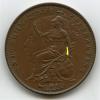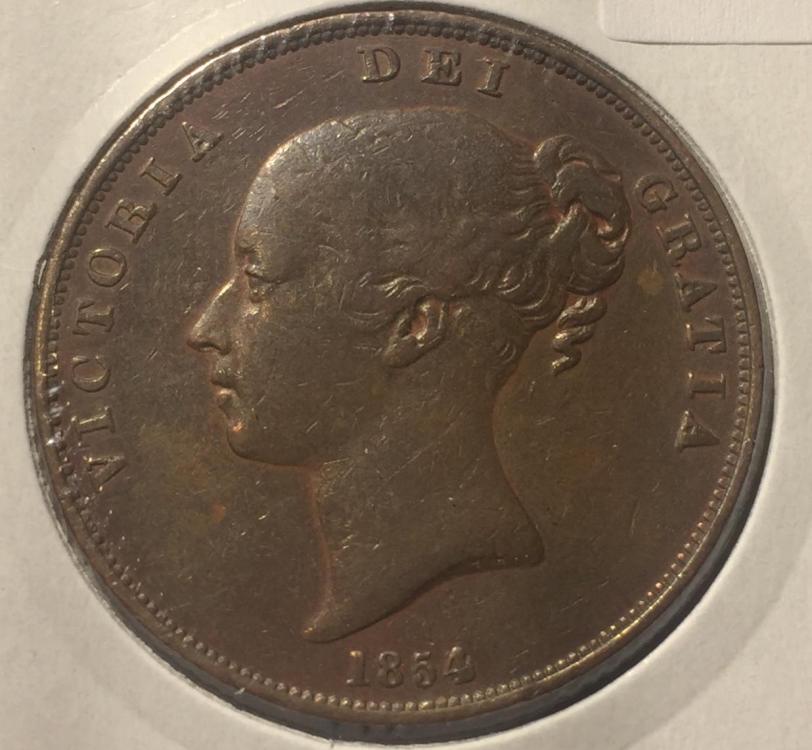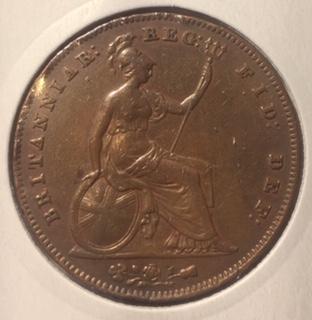|
|
The current range of books. Click the image above to see them on Amazon (printed and Kindle format). More info on coinpublications.com |
|
|
-
Content Count
729 -
Joined
-
Last visited
-
Days Won
67
Posts posted by alfnail
-
-
Thanks Bruce, have a good one yourself.
-
51 minutes ago, Bruce said:Is it where the dot should be taken place in your specimen?
Hi Bruce, good you were able to confirm.
Yes, top FID dot does match location on my own piece, as do all other 3 sets of colon dots (see full reverse picture).
I have also taken a digital microscope shot of the top FID dot; and can now see that even on my coin it is a little weaker / flatter than usual.
-
 1
1
-
-
Looking at the pictures provided by Bruce, and noting that there are also 48/47 varieties with 7 in middle of bottom circle of numeral 8, and also at back of bottom circle of numeral 8, I suspect that Bruce’s coin is probably the third type (Bramah 10b) with the numeral 7 towards the front of the numeral 8.
This can be confirmed if Bruce could check that his over-date matches my first picture, and then check EI of DEI to see if the small protrusions at the top of both letters are present on his coin as per my second picture.
If the above obverse ‘features’ match Bruce’s coin then let’s turn to the reverse and check to see if the B of BRITANNIAR and the E of DEF match my 3rd and 4th pictures.
If all these ‘features’ are identical then I think that we have a match for both the obverse and reverse dies.
If this is the case, and as I have now reached the 500Kb limit for this post, I can post more pictures of my full obverse /reverse which show that the top colon dot after FID did exist on the original reverse die. Whilst I think I can see remnants of the top colon dot on Bruce’s piece, it must have somehow become less obvious / missing at a later date e.g., through wear or die fill. The other 3 sets of colon dots on my own coin also seem to be identically positioned to those on Bruce’s example i.e. by way of further confirmation that both these coins have been struck from the same die pairing.
-
 1
1
-
 1
1
-
-
All sorted now, many thanks to Mike.
-
 1
1
-
-
Thanks Pete, that's the one, well remembered!
Hope all good with you.
Ian
-
Can anyone point me at the auction result for an 1858 Large Rose Large Date penny which I think was sold at auction earlier this year for around £1000....maybe Baldwins? Thanks in advance
-
Looking for a high grade example, doesn't need to be a rare type, a common year will do. Please PM me, preferably with pictures and price, if have a spare thanks.
-
19 hours ago, Diaconis said:“To be honest”…
Indicating perhaps that you often aren't...... hopefully not a favourite expression in the coin selling community!! 🙄
-
 2
2
-
 1
1
-
-
Yes, it's beautiful 'in the Summertime when the weather is hot, you can stretch right up and touch the sky'. Was hoping to get a serious answer though guys!!
-
-
Put a few more pennies on ebay last night, including the 1875 Cannon Ball discussed on this thread (pages 171/2), and a low grade 1875Hh with repaired legend (Gouby Page 70).
Low grades, but maybe of interest to one or two members to fill a difficult gap:-
-
 2
2
-
-
Assumed people would look if interested Richard, £ not $!
-
Interesting looking at the DNW auction on 1st December how little an 1863 Open 3 is now expected to fetch (Lot 298). I'm sure I have sold one no better than that for around £500, probably shortly after they were first discovered.
Couple of nice Victorian Coppers on there, including an unusual 1846 with a dot!
-
Properties of the jpeg images saved at the time of the eBay listings
-
Me again Richard.
Re. the 3 1843 DFF's sold at LC:-
Lot 3115 is also the first coin from the 12 I have sent you pictures (which I numbered 1006). It was sold on ebay in December 2008, I bought it at LC in March 2016 and then sold it to a private buyer later that year.
Lot 2624 is also the third coin from the 12 I have sent you pictures (which I numbered 1015). It was sold on ebay in March 2009.
I have no additional information re. LCA Lot 1881 from 2014
Just wanted to prevent duplicate counting!
-
-
25 minutes ago, secret santa said:15 in 5 years - just about qualifies for entry. I wonder where they are now ? Come on guys - let's see them all.
Have sent you folder of pictures; think may have been only 12 after trying to discount duplicates over the 5 years. Different sellers can have quite different pictures of same coin so it's always difficult to be 100% sure...see what you think.
-
1 hour ago, secret santa said:I think I'll add this to the rare penny website - can I ask any owners to send me their pictures please.
There were 15 x 1843 DFF's in my 5 year study (2007 to 2012) of all ebay Victorian Copper Penny listings Richard.
-
Careful Mike, auction still open on that coin, you risk upsetting someone!
-
Thanks Mike, was happy to sell you the 1843 DFF.
I have never seen a DFF on REG no colon, and very much doubt that it exists.
There is another 1843 REG colon die, which I think is just as worthy as the DFF as being recognised as a variety, and less common than the DFF.......it was probably just never seen by Bramah.
This is the repaired REG colon, which imo is the most obvious colon repair in the entire young head penny series, pictured below for information.
-
 2
2
-
-
Methinks the 1843 would fetch a fair bit more than £40.
-
 3
3
-
-
In my opinion the F16 is worth far more than £14, so you have done very well I think.
-
 1
1
-
-
16 minutes ago, Bruce said:Yes, there are lots of different varieties, even for just 1860 alone; far too many to try to explain on the forum in one post.
Suggest you either buy a book, or read Richards website....or both!
Fyi this coin is a Freeman 16, which is actually one of the more difficult varieties in 1860, and even in an average grade is quite a nice buy. May I ask what you paid for it?
-
 1
1
-
-
27 minutes ago, PWA 1967 said:1854/3 with the bits showing correctly on both sides.
1854 Penny (PT) - Victoria British Copper Coin | eBay
Well spotted Pete. I think I even looked at that one and missed it.....losing my touch!!
-
 1
1
-
 1
1
-
 Coinpublications.com
Coinpublications.com












.thumb.jpg.aa39a4289eec7eecd90d113ec742a0f1.jpg)
.thumb.jpg.029ea94a6614f0e9548df69eb410667e.jpg)


Stuff to Make Us Laugh
in Nothing whatsoever to do with coins area!
Posted